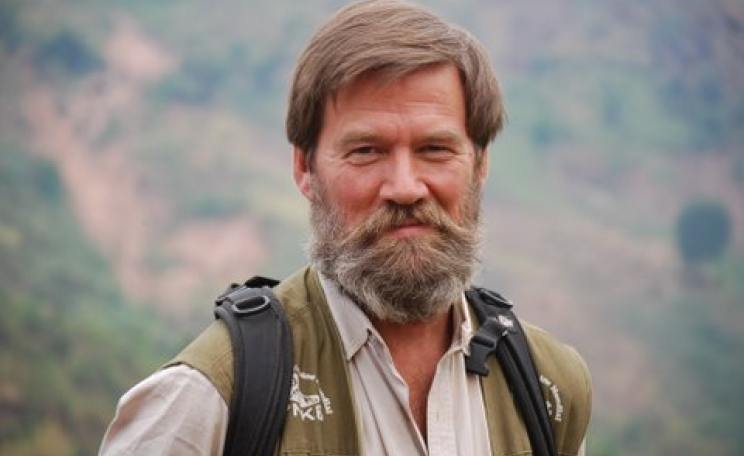In the 1920s control measures began in developed parts of the world. According to the World Organization for Animal Health, many countries have reduced or eliminated bovine TB from their cattle population; but infections remain in the UK, Western Europe, North America and New Zealand.
Methods of control including testing, monitoring of movement, vaccination, biosecurity, wildlife surveillance and culling vary across infected zones, with some practices proving more controversial than others.
Wildlife has been identified as a key carrier of the disease, and is accused of infecting cattle. The wild carrier of TB in France is the red deer, whilst the African buffalo, North American cervids and Spanish wild boar are all seen to be the enemy of family farms, intensive dairy units, and national economies.
In New Zealand, the Australian brush tailed possum (introduced in 1837 to establish a fur trade) has been the focus of an eradication programme that involves aerial drops of Sodium fluoroacetate (1080), a poison that is lethal to mammals, birds, insects, amphibians and other wild and domestic animals. It is disguised in food paste, and dropped from helicopters into areas believed to be dense with infected possums.
The Animal Health Board in charge of the programme state that 'possums that eat a lethal amount of 1080 usually die of respiratory failure within 6-18 hours.' The government has seen a decline in the disease but states that there is 'still a relatively large problem' in New Zealand.
Closer to home, in the idyllic hills and pastures of The Republic of Ireland, as in the UK, the native badger has been named as the culprit. The culling of badgers has been underway in some capacity since 1997, and in its current form since 2004. Badgers, including lactating females with cubs, are snared and then shot at close range. Around 97,000 badgers have been culled since 1984 under the badger removal policy, with support from farmers and minimal public protest.
A spokesman for the Department of Agriculture, Food and the Marine says that: 'there has been a very significant improvement in the Bovine TB situation in Ireland since the introduction of an enhanced programme in the early part of the last decade... While it is difficult to quantify the precise impact of badger culling on the incidence of TB in Ireland, the Department believes that much of the improvement in the TB situation in cattle is in fact due to the badger removal programme.'
Fintan Kelly, Research Officer at The Irish Wildlife Trust, disagrees, saying: 'It is impossible to say wether the culling in Ireland has been successful or not. The government states that the increase in culling has lead to a decrease in bovine TB, but there are many other factors involved.'
He believes instead that the decline in TB is due to stringent new rules and testing between 2004-2011, including more frequent and more accurate testing, with a huge increase in the amount of tests being submitted annually. Herds are smaller, and the national herd is down by 16.7 per cent.
According to Fintan, focus should now be placed on vaccinations which don’t create the perturbation effect (the scattering of badgers that spreads the disease further), take into account animal welfare, and are advancing more rapidly than the public are led to believe.
| READ MORE... | |
 |
NEWS ANALYSIS News investigation Badger cull a PR disaster for UK countryside, warn 'dissident' farmers A growing number of farmers are now questioning the nature of the cull and its effectiveness. And some are blaming poor biosecurity and intensive farming for the spread of TB in the UK cattle herd. Andrew Wasley and Sarah Stirk report |
 |
NEWS ANALYSIS COMMENT: Why the organic movement's badger cull stance threatens its image If the Soil Association joined those opposing the cull it would be able to brand its organic milk and dairy products 'badger friendly'- no doubt leading to a much needed boost in sales, says Dominic Dyer |
 |
NEWS ANALYSIS Wildlife in the firing line in global war against bovine TB Where there are cattle, there is the threat of bovine Tuberculosis (TB). The farming methods may differ greatly, but from the dairy farms of Ethiopia to the beef herds of Canada the race is on to find the best way to tackle the disease |
 |
NEWS ANALYSIS COMMENT: Boycotting organic farms over badger cull is 'counter-productive' Buying organic food is an important choice for everyone concerned about animal welfare, wildlife and conservation. It would not make sense for consumers to stop buying organic if they disagree with badger culling, says Helen Browning |
 |
COMMENT The great badger and bovine TB cover-up: is it really a health risk? With controversial plans to allow farmers to cull badgers later this year, Ed Hamer asks whether Bovine TB is really a health problem for either cows or humans |







